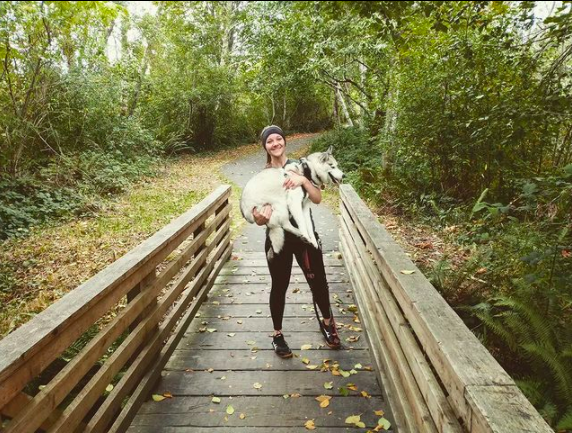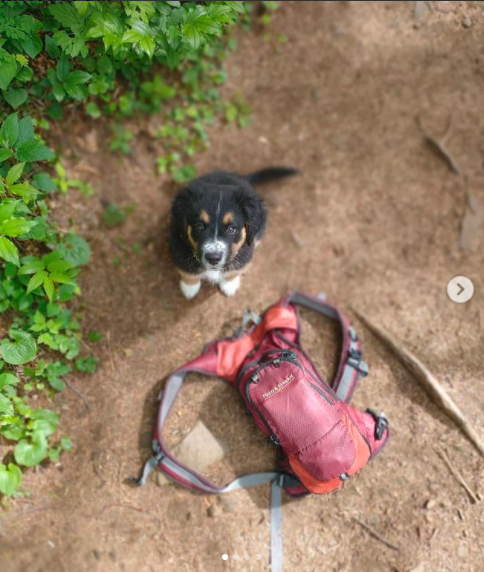My earliest interpretations of minimalism were cultivated from a family of do-it-yourselfers; entrepreneurs, hunters and gatherers, gardeners, and money-savers. As I grew, so did my fascination with survivalist ideals—traditional stoic values and the innate satisfaction that came from “doing without.”
In 2009, these ideals became a foundation. Taking the summer off of college courses, I hopped on a plane to my birth state of Alaska. The goal was to work a seasonal gig (May–September), save some money, and as an avid writer, to take it all down. I arrived with the basics, including a couple of journals and a film camera (my dad’s old Canon), leaving behind, however, my phone and laptop—items I considered distractions from the summer goal. I was 24 years old, single, no kids, and cramming for an education that did not always seem to hold my best interest. I was unfocused, disenchanted, and caught up in the college lifestyle that hindered my actual needs; waking to the reality of being 100 lbs overweight, and sad at the (in)sight. The time was now to do some soul searching, and Alaska was my happy place.
My childhood roots had brought me back to south-central Alaska, just north of Denali National Park, along the George Parks Highway. Business owners in the mid-80s/early 90s, my parents began Denali Photo—the first one-hour photo in the area at the time—landing contracts with local rafting companies for the opportunity to develop and sell their photos (the cool, white-water rapid shots) to tourists at the closing of their guided tours. They were literally slinging photography from a work van, on sandy, Alaskan river banks and beaches, to eager tourists in wetsuits. Mom and Dad sold the business when I was ten years old, but my appreciation for the wild, nomadic, self-made lifestyle, and their willingness to go without many basic needs for the summer months, had been a lifelong inspiration, and the burning fuel for my 2009 return.
I had work lined up with family friends, and living accommodations, which included a part-time stay in employee designated housing—a one-room cabin with a mini fridge, a hot plate, a microwave, a bed, a small loveseat, a space heater, and a shelf with a rod for hanging clothes. The toilet was an outhouse not 20 feet from my door, and a sink with running water was down the hill, connected to my job-site and available to me for washing dishes and hands. A single-unit shower house was located on the other end of the property, and shared by a few employees. The rest of my time was spent at the rustic cabin of my childhood, off of Stampede Trail, in Healy, Alaska. It was the summer for putting away the noise. The summer of establishing the core values that I knew could change me if I let them. This was the summer that changed all perspective, and my life.
It was the summer I wrote every day. I moved more because I felt more. I ate differently because I needed it differently. I had focus and direction. I had shed the physical baggage of 50 lbs that summer, and mentally gained the independence that I knew was pivotal to living the dreams of my adult life. I would go on to lose a total of 100 lbs once returning to school—honing diet, habit, and mindset, driven by the need to create unfaltering perseverance and self-reliance. Soon came longer workouts, better fuel, stronger runs. I graduated college.
A better understanding of minimalism began in 2019, in the infancy of my plant-based diet. I began as a call to health and performance after watching the Netflix documentary, The Game Changers (a focused study on plant-based athletics). But also having fueled workouts for years at this point, I recognized that diet is the key component to a serious lifestyle change.
This very soon framed a much bigger picture, as Earth spoke loudly of the burdens of our consumption.
It seemed that all that was required from me was a simple change of mindset—a concept that prior years of health, fitness, and stoic values had taught me to embrace. What greater power was there than controlling your mind, and inevitably your actions, for the greater good of living low-impact?
Finding joy in a mindset based on self-control was not a new concept for me, but as a total lifestyle, and one that I now share with a partner, it took some undivided attention.
Vegan minimalism is more than giving up your morning eggs, and soon this concept took the shape of other compromises. Veganism is rooted in mostly low-impact practices; namely, avoiding the exploitation of animals and consuming less animal products and bi-products. Realizing that this not only affected
my grocery list, but fabrics and skincare, and ways I did business, made living low-impact seem very impactful, indeed.
The old adage “quality over quantity” echoes these traditional minimalistic ideals. In these ways, minimalism and veganism complement one another. According to Ofei’s The Minimalist Vegan, “Minimalism is, at its core, anti-consumerism, and can be a way of showcasing ‘purchasing power’, or in this case, ‘non-purchasing power.’ Veganism can be used in the same way. In many aspects, both ideals look toward the same goal: being conscious of exploitative and wasteful practices to protect our health, the environment, and the lives affected by unrestrained consumerism (whether human or animal).”
Fast forward to 2018: my partner and I were planning a temporary life on the road. We shared the travel bug (after years of living and working in our home state of Michigan), as well as a love for the outdoors. We had not yet committed to a vegetarian or vegan diet (and hardly a new home), nor had the idea been planted (pun intended),
but we found ourselves inevitably adopting a minimalist lifestyle, as one goes through the motions of what will fit inside the bare bones of an 18-ft Ford Econoline.
When considering physical limitations, the minimalist checklist of supplies and appliances were not mutually exclusive to the considerations made for diet-related compromises. What was cost-effective and essential? How would we keep meat and dairy from spoiling? What was multi-purpose? What could be reused instead of replaced?
How would we eat healthy on the road while keeping to a budget?
Other considerations:
Why do I need it?
How was it made?
Is it used on a regular basis?
Creating a mental Venn diagram of these concepts seemed the simplest way to tackle these critical components. What did these goals (diet and minimalism) have in common, and what would we be willing to sacrifice in order to propagate an enjoyable, low-maintenance lifestyle that honored both?
The Cost of Living Low-Impact
Henry David Thoreau wrote in Walden, “My greatest skill is to want but little.” Likewise, van-dwelling seemed an opportunity to practice the values that had been instilled from a young age. From the multi-use function of your basic cast iron, to the mindful incorporation of biodegradable soaps, it was more than convenience that drove our propensity to live low-impact, and more than initial dollars and cents. It may have been “easier” to grab the newest, cheapest “thing” from the shelves, but when considering the cost of living as a vegan minimalist, it is important to discuss the consequences.
To most, the concept of “easy” is met by greater convenience, in turn, equated as “less stress.” Less stress is so obviously rooted in greater ease, that it is common to take this route as a means of living. I, myself, nearly “anti-convenience” by this point, knew that at the cost of these conveniences were troubling short cuts; on our land and in our waters, and in our own minds, which had been persuaded to want more, need more, and to spend more—somehow sacrificing the ultimate goal of becoming satisfied.
How much were we willing to waste to chase this insatiable need?
Common to the misconception of minimalism is the notion of “no shopping.” However, minimalists do require food and toilet paper like the rest. The difference here is shopping with intent rather than mindlessly consuming the next desire. We bought used, quality items, but also spent a bit more on other supplies that wouldn’t need
quick replacing; brands we knew took pride in sustainable practices. We kept multipurpose clothing, tools, and utilities, and donated or sold what we wouldn’t need. Quality over quantity.
As the idea of summer travel became our reality, we took to the road as vegan minimalists. Once eliminating meat and dairy became part of our lifestyle, it made packing for our travels less burdensome and more realistic in matching other goals.
Equipped with one pan, one pot, a 6-quart dutch oven, a couple propane-powered cook-tops, an iron grate for pit-grilling, a french press, metal silverware & cooking utensils, two silicone dish basins, one medium food cooler, one large water cooler, and two wooden cutting boards, our minimalist attitudes mirrored other choices; glass over plastic, paper packaging for burning, and environmentally-safe dish & laundry soaps.
As for food, it wasn’t about replacing every meat or dairy product with its faux counterpart, so we were able to use whole-food essentials for balanced, flavorful meals. In addition to garlic, herbs, and spices, we stocked oats, beans, rice, quinoa, and canned vegetables for the bulk of our meals, knowing we would utilize farmer’s markets in addition to fresh grocery store items along the way.
The elephant in the room is the obvious stigma of veganism being high maintenance.
No stranger to the irony, I feel the lowest maintenance I have ever felt, and realizing the great impact of a low-impact lifestyle has made the follow-through easier than imagined.
After our travels, it opened the door to being mindful in our new home. The restriction became power—it led to less clutter, less social media, less subscriptions, a means to less need, less want, and more living. Less time wasted, and more time spent.
While we don’t claim to be perfect at any of this, we do give good effort, and while it seems that every day we learn something new, with every meal and every purchase, it’s true that every day we feel a little closer to saving the world.
Get more like this—Sign up for our daily inspirational newsletter for exclusive content!
__
Photo: Paige VanSice






